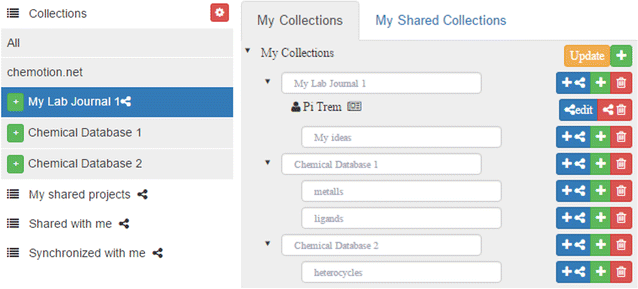LabVIEW is able to interface to many hardware items for control and monitoring.
- Protoss Electronic Laboratory Port Devices Driver License
- Prottoss Electronic Laboratory Port Devices Driver
Logic Probe Tutorial Includes:
What is LabVIEW?LabVIEW environmentLabVIEW VIsProgrammingDriversExample / tutorial
The LabVIEW instrument driver is essentially a set of software routines that enable data to be sent to an instrument or device and data received from it. Within the overall driver there are individual sub-routines that enable various tasks to be performed. Click Create a new port. Select Local Port for Type of port. In the Port Name box, type the path to the printer in the following format, where server is the name of the print server and printer is the share name of the printer (e.g. Server printer). Select the printer model and driver.
LabVIEW is able to control devices and also receive responses from them. To achieve this, an interface is required enabling LabVIEW to connect to the device or instrument.
A Commercial Driver License (CDL) authorizes an individual to operate a commercial motor vehicle or combination of motor vehicles used to transport passengers or property. Individuals applying for a Commercial Driver License should recognize that this is a professional license with more testing requirements than other licenses. Before you can reinstall such a device, you must first find this 'phantom' devnode, and mark it as needing reinstallation. Then, when the device is plugged back in, Plug and Play will reenumerate the device, find the new driver for it, and install the driver for the device. To reinstall an unplugged device: Call the SetupCopyOEMInf function.
These interfaces are called LabVIEW drivers and there is an extensive library of these drivers that are available within the LabVIEW ecosystem.
Instrument drivers: the basics
Protoss Electronic Laboratory Port Devices Driver License
An instrument driver provides the interface between the core LabVIEW software and the instrument or device that it needs to control or receive data from.
The LabVIEW instrument driver is essentially a set of software routines that enable data to be sent to an instrument or device and data received from it.
Within the overall driver there are individual sub-routines that enable various tasks to be performed. These include: configuring the device, reading from, writing to, and triggering the device or instrument. Instrument drivers simplify instrument control and reduce LabVIEW program development time by eliminating the need to learn the programming protocol for each instrument.
The LabVIEW driver takes the commands from LabVIEW and then converts them into the instructions required for that device, sending them over the relevant interface whether it be USB, serial, Wi-Fi, Ethernet, GPIB or any other interface applicable for that device.
Prottoss Electronic Laboratory Port Devices Driver
LabVIEW drivers are developed for a host of differnet instruments. Some are developed by National Instruments, the company that develops and owns LabVIEW, but other drivers may be developed by third parties – possibly the manufacturers of the devices. Some LabVIEW drivers may incorporate all the remote controls applicable to the device and over a variety of interfaces applicable to the device. Others may have a limited set of instructions or capabilities. Additionally many are available free of charge, but for others there may be costs associated with them. It depends upon the devices, the manufacturers and the developers of the code. However most of them are available within the LabVIEW ecosystem without additional charge.
Overall LabVIEW provides extensive support for interfacing to devices using LabVIEW drivers. These instrument drivers may be written in a variety of ways: LabVIEW, LabWindows/CVI and they use either Virtual Instrumentation Software Architecture, VISA, or the Interchangeable Virtual Instrument, IVI, protocol.
LabVIEW driver availability
National Instruments makes thousands of device drivers available for download on the NI Instrument Driver Network, IDNet or directly from within LabVIEW.

Additionally many equipment manufacturers may also make drivers available via portals on their own sites. With many companies and organizations using LabVIEW, it pays these device and instrument manufacturers to make LabVIEW drivers available to increase the competitiveness of their products.
Using a LabVIEW Instrument Driver
Within LabVIEW and instrument driver is made up from a set of VIs, or Virtual Instruments. Each VI corresponds to a particular operation like configuring, reading, writing or triggering an instrument or device. By using this approach the programming of instruments or devices is considerably simplified as it overcomes the issue of programming in a low level language.
There are two main ways of finding and downloading pre-prepared LabVIEW drivers from within the NI LabVIEW ecosystem:
- NI Instrument Driver Finder: This method can be used on LabVIEW 8.0 or later. Select Tools » Instrumentation » Find Instrument Drivers to launch the Instrument Driver Finder. This tool searches IDNet to find the specified instrument driver.
- IDNet: For older versions of LabVIEW, prior to V 8.0 then it is necessary to directly search IDNet.
There is a huge variety of different LabVIEW instrument drivers providing the interface between LabVIEW and the peripheral hardware devices and instruments. These are a central element of the overall LabVIEW ecosystem and provide an easy method of controlling instruments and accessing data from them or from remote devices.
More Test Topics:
Data network analyzerDigital MultimeterFrequency counterOscilloscopeSignal generatorsSpectrum analyzerLCR meterDip meter, GDOLogic analyzerRF power meterRF signal generatorLogic probePAT testing & testersTime domain reflectometerVector network analyzerPXIGPIB Boundary scan / JTAG
Return to Test menu . . .